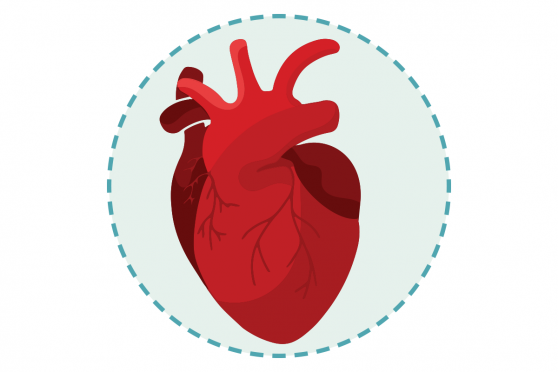Seven easy steps to a healthier heart
Lower your heart disease risk with small changes

Heart disease is the leading cause of death among all Americans, and your habits today help determine how healthy your heart is in the future. Plus, many adults under the age of 65 already have warning signs of heart disease. Among adults between ages 35 and 44 years old, 25 percent of men and 19 percent of women have high blood pressure, which can lead to heart disease if left untreated. For older adults, roughly 69 percent of men between ages 60 and 79 and 68 percent of women in that age range have some sort of cardiovascular health problem, according to the American Heart Association. For adults over 80 years, 85 percent of men have a cardiovascular issue along with 86 percent of women.
The good news: you’re not powerless against heart disease. You can lower your risk by making small diet, exercise, and lifestyle changes. Try these.
1. Avoid hidden sugars
Women should get no more than 100 calories a day from added sugar, and men should get no more than 150 calories a day, according to the American Heart Association. That means no more than 24 grams of sugar for women and 36 grams for men.
You don’t have to worry about naturally occurring sugars in fruits and low-fat dairy products. But you should look for ways to cut back on added sugars, especially from sweet drinks and packaged foods. Do you drink flavored coffee? Each flavor pump has about 20 to 60 calories. Use less flavoring, or switch to coffee with a splash of milk.
2. Eat more fiber
Fiber is a heart-healthy all-star. It’s been shown to help lower cholesterol, blood pressure, and blood sugar levels. It can also help with weight loss. Choose fiber-rich whole grains, such as whole wheat bread and brown rice, instead of low-fiber refined grains like white bread and white rice. Berries, broccoli, and beans of any sort are also full of fiber.
3. Stand when you can
“Recent research suggests that the more hours we sit, the higher our cardiac risk,” says Jeffrey Schwartz, M.D., a cardiologist in Morristown, New Jersey. Pay attention to any time spent driving, watching TV, or sitting at your desk. Get up and move every 20 minutes. If you can, pace during calls, or take a break and go on a walk.
4. Limit pain medications
Do you respond to pain by taking pain relievers? Hold off or check with your doctor first. Pain relievers, such as ibuprofen, naproxen, and diclofenac, can spike your risk for heart attack and stroke, especially if you have diabetes, high blood pressure, or high cholesterol, says Dr. Schwartz. Try other ways to relieve pain. Do some gentle stretches if your back is hurting, or gently massage your hands if they’re aching. If you continue to experience pain, check in with your doctor.
5. Get quality sleep
It’s easy to take sleep for granted, but you shouldn’t. Lack of sleep has been tied to high blood pressure and obesity. “It’s been shown to increase the risk for heart attack, stroke, and heart failure,” Dr. Schwartz says. Aim to sleep for 7 to 9 hours and avoid caffeine after lunch. “It’s also a good idea to avoid working, watching television, or using a computer in bed. Let your body associate your bedroom with rest,” he says.
6. Manage stress
Uncontrolled stress can harm the heart. “Stress hormones make your heart rate, blood pressure, and blood sugar levels go up,” Dr. Schwartz says. “Over time, the blood becomes more likely to form clots.” Mindfulness meditation has been shown in many studies to fight the negative effects of stress on the heart. Start with a simple breathing exercise: sit in a comfortable position and take 10 deep breaths. Spending time with loved ones or on your hobbies can also help relieve stress.
7. Volunteer for a good cause
It turns out that helping others can also boost your quality of life. Volunteering can give you a sense of purpose and a chance to use your time for something you care about. Why not make it a heart-healthy project, and sign up for a walking event that raises money for heart disease or other health research?



